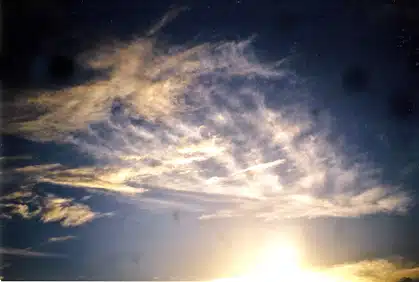The image is of the Sinca Veche cave in Romania (near Fagaras)—featured in IV. It has long been considered rather mysterious and sacred. My relationship to it is recounted in Keep This Quiet! IV. It began one day when a man came into my publisher’s office. He was carrying a manuscript he wanted to get published. It was about the cave. Quite soon we were all three on a trip to see it firsthand.
KTQ! IV is almost out. Watch for it in Amazon preorders. It’s published again by Saeculum University Press (Didi-Ionel Cenuser, in Romania). Take a peek below:
— 21 —
Bipod Metalism and a Cave
1997–’99: visits to the Romanian cave,
Temple of Sinca Veche, Temple of the Wishes
In Romania to publish Love in Transition IV: The Bedtime Tales of Jesus—The Unconscious History of the Earth, I was in the office of Didi Cenuser, my publisher, when a man entered with a manuscript. Didi said it was about a cave the man wanted passionately to publicize, study. A cave? The mere word bespoke mysterious underground
chambers to me. Naturally, I wanted to go. Back then the cave—near the small Transylvanian town of Fagaraş in Brasov County—was frequented only by locals. Its age is unknown—seven thousand years?—and legends abound; for instance: The temple consists of five rooms, with two altars, and on the ceiling there is a chimney through which you can see the sky. The walls are drawn with different signs, and also with texts in a forgotten or unknown language . . . In here, the Dacian Priestesses used to operate. For a long period of time, the spiritual and administrative activity of the ancient Dacians
was led by the High Priestesses.” When I went there, we had the cave to ourselves.Preceded by two children who presented me with flowers, we reached it through a meadow. On the way Didi pointed out a prehistoric mound.
Inside the cave I heard, in a little voice in my head I half dismissed, that I should pay special attention, it should stir my memory. The near-eighty-year-old man guiding us, who was president of the society for preserving and researching its history, had played here Margaret at the Temple of Sinca Veche as a kid. He said to look at the chimney on top, it hadn’t been open like that when he was a kid—the light had been blocked. As the interior was earlier utterly dark, none of the children (or anyone else) had known about the face and symbols carved into the inner wall. In his day the children lit branches to go in. Also, the two giant, empty holes conspicuous in the entranceway walls today had held
huge crystals. Stolen around the time of the Second World War, they brought, he added, disaster to the thief. He showed us tiny pieces of quartz lying on the ground outside and said someone who slept in the cave dreamed the entire site sat on a bed of crystals. He said he thought in earlier times people meditated inside, using quartz “technology” to make contact telepathically with other dimensions.Then I saw the symbol deep in the interior and the face on the wall. A man with his mouth right up against his nose. I felt drawn to him. I had a vague sense of recognition. I couldn’t shake the impression it looked like Jesus. When I later asked Al Miner whom it looked like, he immediately emailed, “the Master.” Beside the face was a hexagram (the Seal of Solomon, or Star of David) with a yin-yang, symbol inside. When I look at the long, winding road of my journey, the unlikely find on the wall is a perfect synchronicity.


